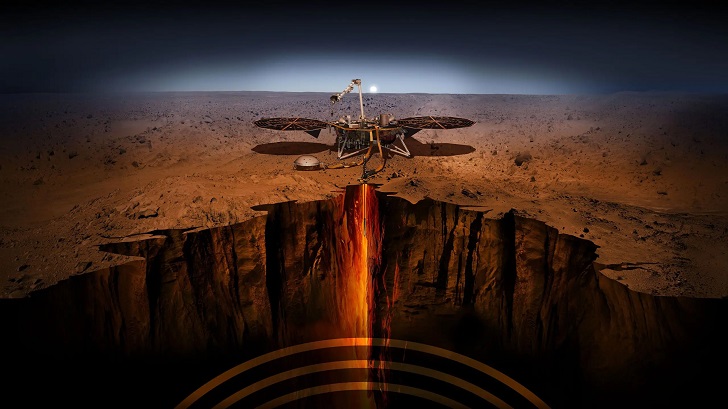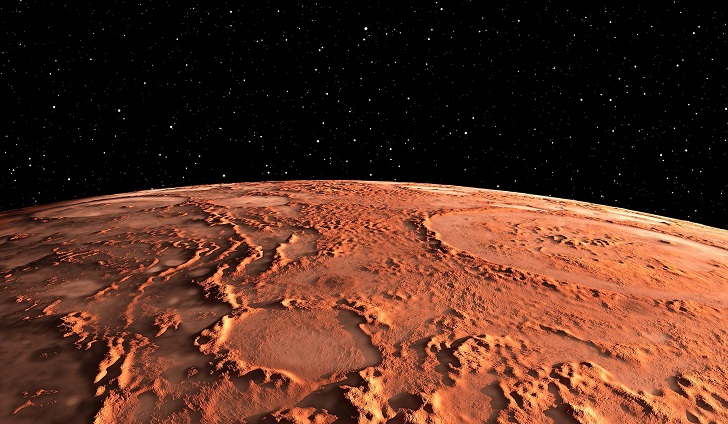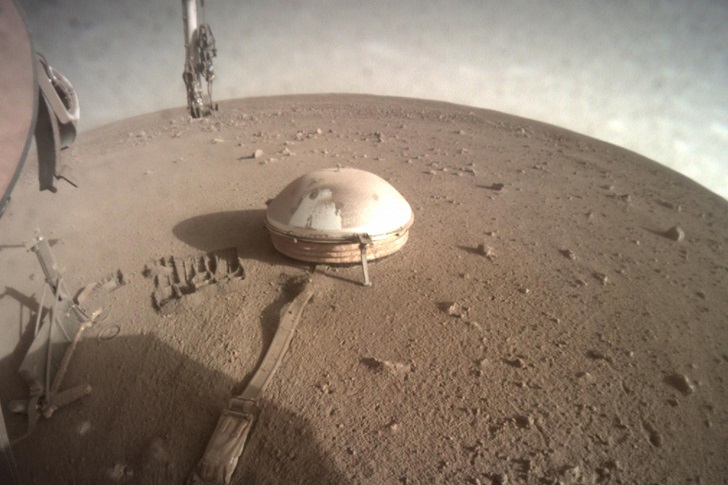In November 2018, NASA’s Mars InSight Lander touched down on the Red Planet, marking the first time a mission would directly study the interior of Mars. Since then, the lander has been busy analyzing the planet's seismic activity and weather patterns. Here's what NASA’s Mars InSight Lander has discovered over its lifetime and what that means for our understanding of the Red Planet.

NASA/ JPL-CALTECH | InSight revealed Mars's interior to scientists for the first time by capturing more than 1300 Mars quakes
Seismic Activity
One of the primary objectives of the Mars InSight Lander is to study the seismic activity on Mars. InSight has detected over 480 marsquakes that are much milder than earthquakes and only occur once or twice daily. Understanding the nature of these seismic activities will help us better understand the structure and composition of the planet. InSight’s seismometer also detected a unique hum that scientists have yet to explain fully. The hum, which occurs at night, is believed to result from the interaction between the Martian wind and the lander’s solar panels.
Marsquakes and the Structure of Mars
InSight’s seismic data has provided scientists with new insights into the structure of Mars. Based on the movement of seismic waves through the planet, researchers believe Mars has a crust, mantle, and core similar to Earth’s. However, there are some key differences in the composition of these layers, which could help us understand how the planet formed and evolved.

Shutterstock/ Stock Image | Orbiting the sun at a distance of 141.6 million miles, Mars is the fourth planet from the sun
Weather
InSight has also been monitoring weather patterns on Mars, including temperature, wind speed, and air pressure. By studying these factors, scientists hope to understand better the Martian atmosphere and how it varies over time. InSight’s data has revealed that Mars’ weather patterns are more complex than previously thought. For example, the lander has detected dust devils, whirlwinds that pick up and carry dust from the Martian surface.
The Martian Interior
InSight’s primary goal is to study the interior of Mars, and the lander has been busy analyzing the planet’s heat flow and magnetic field. By studying these factors, scientists hope to learn more about the internal dynamics of Mars, including the movement of heat and the presence of a solid or liquid core. InSight’s data has already provided exciting new insights, including evidence of a liquid layer deep below the Martian surface.

NASA/ JPL-CALTECH | The InSight mission placed a single stationary lander on Mars
The Future of Mars Exploration
InSight’s discoveries are just the beginning of our exploration of Mars. NASA has several other missions planned in the coming years, including the Mars 2020 rover, which will look for signs of ancient life on the planet. In addition, NASA hopes to launch a mission to return samples from Mars to Earth in the coming decades, which could provide even more detailed information about the planet’s history and composition.
Conclusion
The Mars InSight Lander has provided scientists with an unprecedented view of the Red Planet, revealing new information about its seismic activity, weather patterns, and interior dynamics. Each discovery gives us a deeper understanding of Mars and its place in the solar system. As our exploration of Mars continues, we can expect even more exciting discoveries that will shape our understanding of the Red Planet for years to come.